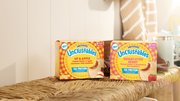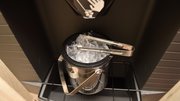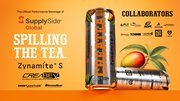Blog
Straws In The Wind What To Look For At A NAMA OneShow
April 7, 2016 by Tim Sanford
TAGS: Vending Times editorial, vending industry, vending editorial, retail automation, vending operator, vending industry history, coin machine, micro markets, coffee service, food service, Tim Sanford, NAMA OneShow, vending trade show, National Automatic Merchandising Association, Gulliver's Lunchbox |
The National Automatic Merchandising Association's annual OneShow offers a once-a-year opportunity to see the latest developments in vending technology, products and marketing. All of these endeavors are driven by innovators' beliefs in the wants and needs of the contemporary market. For this reason, it has been fascinating to watch the intersection of improving capability and unpredictable changes in demand. The advent of nearly ubiquitous wireless networks and the increasing prominence of the millennial generation seems likely to send the industry in a new direction.
It can be difficult to gauge major shifts in public preference, since they tend to occur gradually and often don't attract much notice. In the present era of "big data," early indications are more likely to be detected than they were in the 1960s and '70s, which saw a vast but undramatic movement away from traditional candy and toward salty snacks as the between-meals snack of choice. That glacial trend was accompanied by (or included) growing interest in variety and selectivity. Both of those changes gave operators a reason to adopt the glassfront machines that became available to the full-line industry in 1971, and had a major effect on vendible product distribution, too.
Today, the shift from traditional confections and snacks (and traditional food items) to products possessing attributes believed to be "healthier" is accelerating. This trend has been accompanied by (or involves) wider interest in items that are marketed as being more artisanal and made with choicer, less common ingredients, and therefore more expensive. This augurs well for operators who possess, or develop, the requisite marketing vocabulary. And the desire for novelty, reflected in both evolutions (which may turn out, on the long view, to be two aspects of the same perceptual shift), certainly should hold promise for imaginative operators and suppliers.
With that in mind, it can be instructive to look back at some manufacturer responses to industry change that did not catch on, and others that did. Among successes, the glassfront snack machine stands out. What's worth remembering about that chapter in vending history is that operators generally did not welcome machines that offered more than three times as many selections as the familiar drop-shelf models, that called attention to sold-out selections and that seemed to invite vandalism because of the large front window.
The third objection turned out to be unjustified, but the first two illustrate the point that a concept which appeals strongly to consumers and promises substantially higher sales, at the cost of dealing with larger warehouse inventories containing many more SKUs and paying much more attention to route servicing schedules and procedures, may face an uphill struggle at first. But some operators always will see the opportunity and rethink their processes in order to reap the rewards. At the time, those operators generally adopted glassfronts without publicizing that decision, and then set about using them to win the good locations that they really wanted.
Among innovations that did not succeed, one that we find most memorable is a food machine that was extensively tested by a national operating company under the name "Gulliver's Lunchbox." This was a well-thought-out design that addressed the expressed desire of consumers for more personalization of their sandwich selections. The machine featured an assortment of sandwich fillings, breads and garnishes. The idea was for the patron who preferred a ham and cheese sandwich on pumpernickel with cheddar to purchase all the ingredients and assemble them into just what was wanted.
The machine attracted a lot of attention and certainly drew patrons to the vending area -- in some upscale locations, and for a rather short period of time. Not unlike the later French fry venders, they were very popular as novelty items, but they lacked staying power. The consensus was that consumers really didn't want to prepare their food away from home, and the pricing couldn't be made attractive enough to persuade them to do it.
As with other machine types that either came and went, or else found a small niche and settled into it -- cotton candy, hot dog and pizza venders, for example -- we can't help but wonder whether some of these ideas are going to come around again, with the advantage of modern technology, a more sophisticated customer base and better management of logistics. There had been glassfront machines on the market before Polyvend brought its proven design to a NAMA exhibit after selling it exclusively to Lance distributors for a decade. Those earlier machines did not replace their dropshelf counterparts because their wider selection was not in demand. That changed as the market matured.
I think it's valuable to keep this history in mind when looking over the new products at the OneShow. The next big winner may come in the form of a machine dispensing an unfamiliar product type that requires a different approach to warehousing and delivery. But if it will provide superior profits, it will be worth adopting.
SEE ALSO:
NAMA OneShow Program Probes Latest Vending Technology And Market Changes







